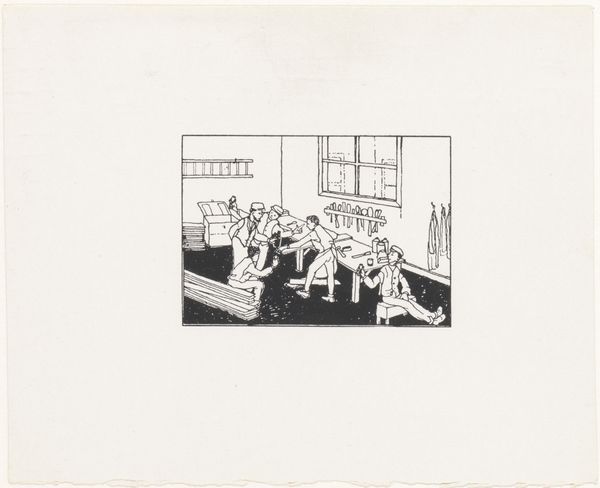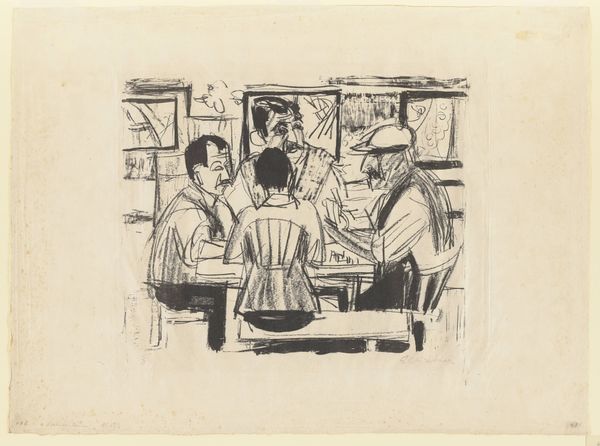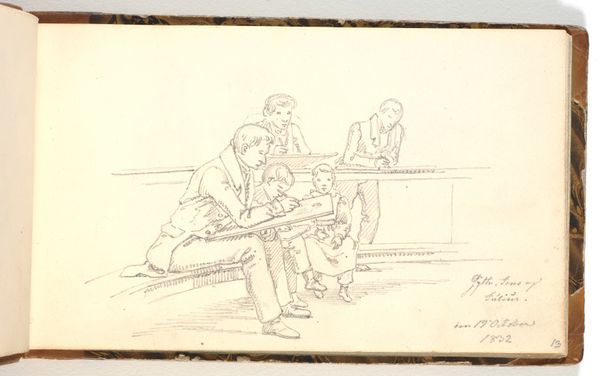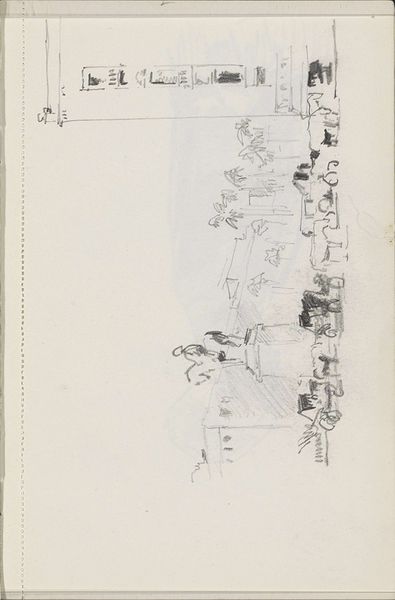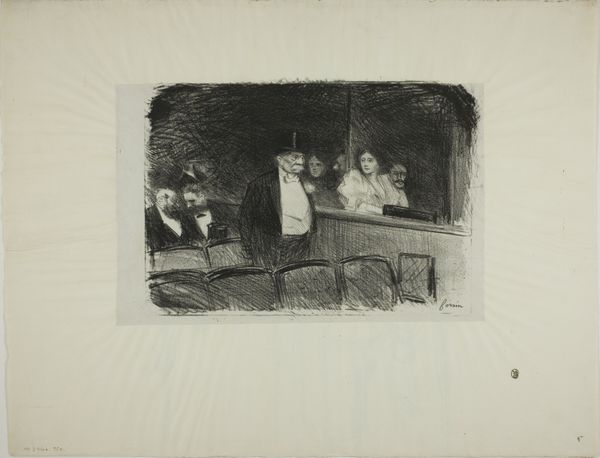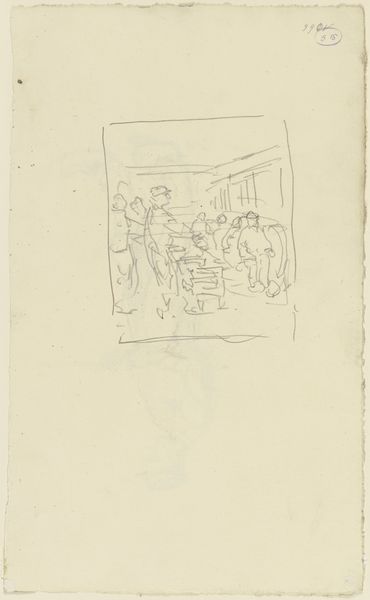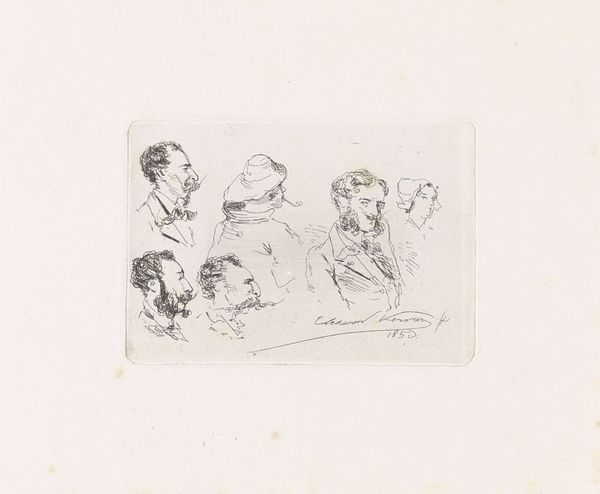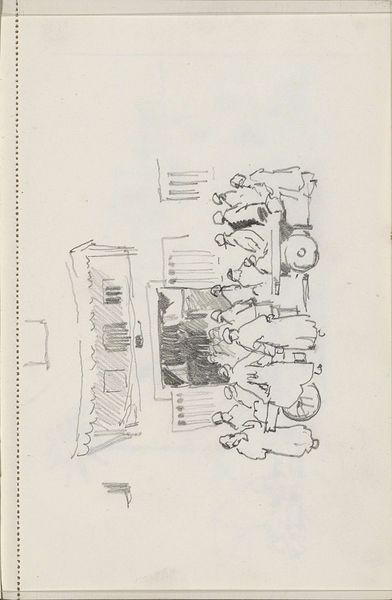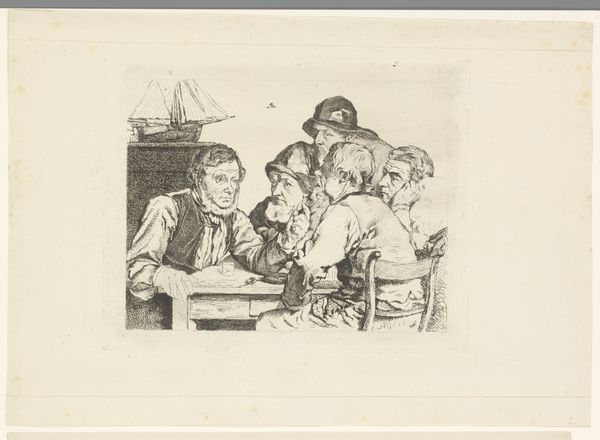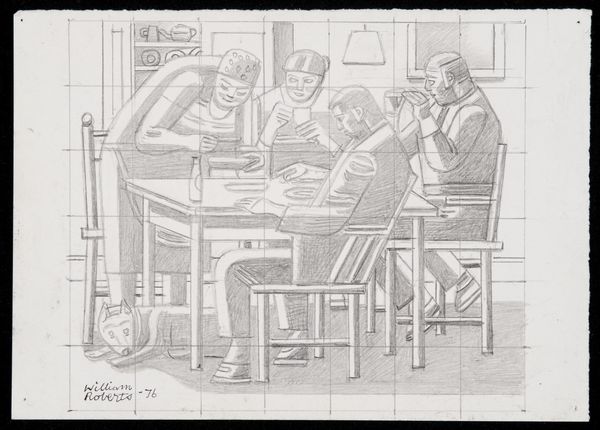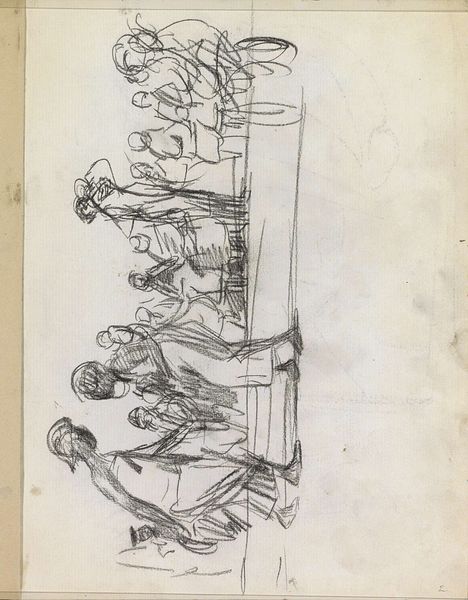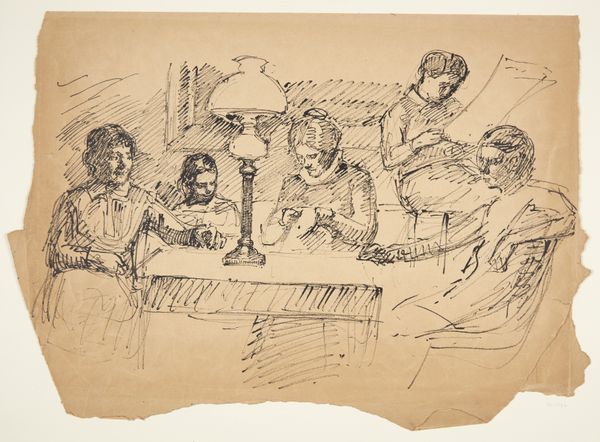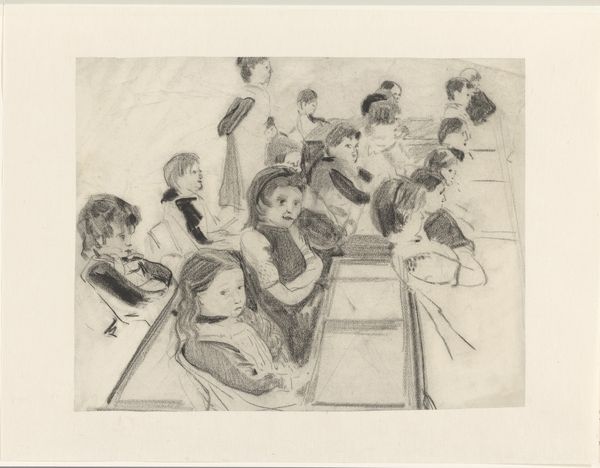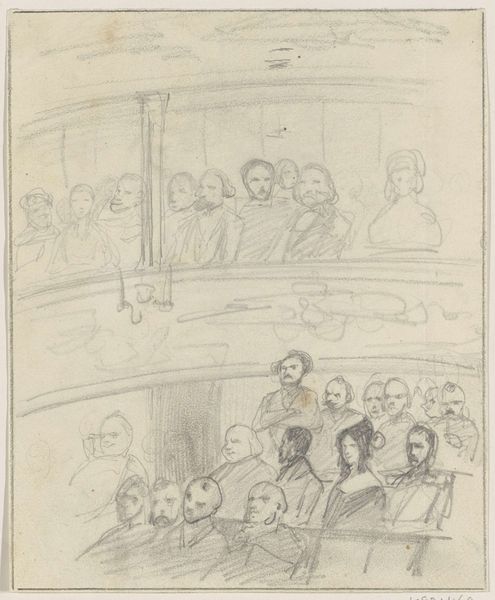
drawing, ink, pen
#
portrait
#
drawing
#
figuration
#
ink
#
ink drawing experimentation
#
pen-ink sketch
#
line
#
sketchbook drawing
#
pen
#
genre-painting
Dimensions: height 106 mm, width 141 mm
Copyright: Rijks Museum: Open Domain
Curator: Here we have "Jongens in schoolbanken in een klas", or "Boys in school desks in a classroom," a pen and ink drawing completed sometime between 1878 and 1924 and now residing here at the Rijksmuseum. It’s by Julie de Graag. What's your first take on it? Editor: It strikes me as a really subdued image. Despite being a classroom full of children, there's an incredible sense of quiet, almost stillness, emphasized by the monochrome palette and tightly controlled linework. It evokes feelings of restraint and order, wouldn't you agree? Curator: Absolutely. The image is rich in symbolism. The classroom, a space traditionally associated with learning and progress, is depicted here almost like a rigid structure, a grid that contains these young boys. I can’t help but recall, though, that it’s difficult to ascertain a more definite time period based on the picture, and so it’s hard to attach immediate contemporary or historical social relevance. Editor: It begs the question of the purpose of the artist in recreating this picture. I wonder if de Graag sought to capture an overarching view of that kind of schooling? Given that its date range spans nearly fifty years, is she representing schools generally at that time? Curator: It invites the idea that a classroom—indeed the act of formal education—functions as an icon in and of itself. It is a shared cultural experience, yet one loaded with personal meanings attached by each viewer and their relation to learning, and school, in particular. And consider how a very minimal intervention on her part could radically alter it – for instance, with one pupil acting out in some small way. Editor: Indeed. What strikes me is the uniformity imposed upon the individuals within the image. The rows of desks and identically dressed boys suggests an environment that does not readily embrace individual differences. Is that representative of a subtle tension? Is it a call for recognition of differences or more individualized, adaptive forms of education? Curator: The beauty is in how open-ended it remains. De Graag creates something enduring simply because we’re invited to attach these various interpretations across time. And, frankly, even if it’s just the memory of being in a class of students and finding familiarity and/or solace in the rows and anonymity. Editor: It speaks volumes with such economy. De Graag provokes so many reflections by focusing simply on these young faces and their shared, formative experience. It really highlights the role art can play in sparking a dialogue about the familiar in the world. Curator: Precisely. I keep coming back to this question of how seemingly simple forms and figures—carefully observed and deliberately rendered—can activate deeper wells of memory and cultural significance.
Comments
No comments
Be the first to comment and join the conversation on the ultimate creative platform.
